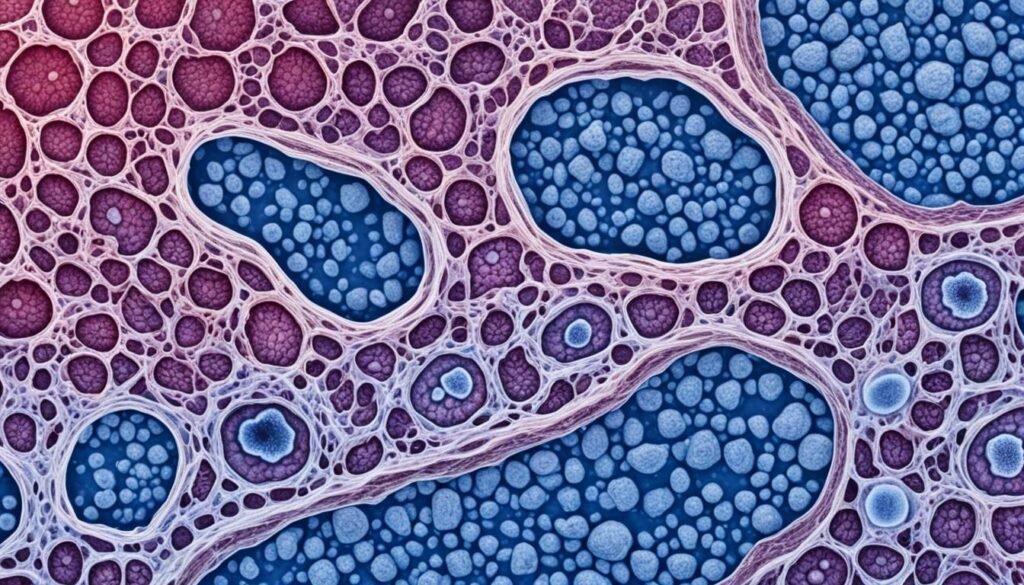Leucoderma is a disease affecting the attractiveness of the skin that often goes unnoticed and misunderstood. This condition, also known as vitiligo, occurs when the cells responsible for producing melanin, the pigment that gives color to our skin, are destroyed. As a result, white patches or spots appear on the affected person’s skin, causing a significant impact on their overall appearance. Beyond the physical consequences, Leucoderma can also have a profound emotional and psychological effect on individuals, affecting their self-esteem and confidence. Understanding the impact of Leucoderma on skin beauty is crucial in promoting acceptance and support for those who live with this condition. In this article, we will delve into the topic, exploring the causes, symptoms, and the latest treatments available for Leucoderma, shedding light on a subject that deserves our attention and empathy.
Welcome to our comprehensive guide on leucoderma, a skin disease that affects skin beauty. Leucoderma, also known as vitiligo, is a depigmentation disorder that results in the loss of skin pigmentation, leading to visible white patches. It can impact anyone regardless of age, gender, or ethnicity and often has a profound effect on the appearance of the skin.
When it comes to skin beauty, pigmentation plays a crucial role. The even distribution of melanin, the pigment responsible for skin color, contributes to a healthy and radiant complexion. However, in the case of leucoderma, melanocytes, the cells responsible for melanin production, are either destroyed or stop functioning properly. As a result, white patches appear on the skin, disrupting its natural beauty.
These patches not only affect the physical appearance but can also have a profound psychological impact. Individuals with leucoderma often experience decreased self-esteem, body image issues, and social anxiety due to the visible changes on their skin. Society’s misconceptions and stereotypes surrounding skin blemishes can further exacerbate these challenges.
In this guide, we will delve into the various aspects of leucoderma, including its causes, diagnosis, treatment options, and impact on daily life. We hope to provide you with valuable insights and practical information to better understand and manage this condition.
Key Takeaways:
- Leucoderma is a depigmentation disorder that leads to the loss of skin pigmentation, resulting in white patches on the skin.
- Leucoderma can have both physical and psychological effects on individuals, impacting their self-esteem and body image.
- Understanding the causes, diagnosis, and treatment options for leucoderma is important in effectively managing the condition.
- Supportive communities and holistic approaches to skin health can play a significant role in coping with leucoderma.
- Advancements in dermatology offer emerging treatments and future prospects for those affected by depigmentation disorders.
Demystifying Leucoderma as a Skin Condition
Leucoderma, also known as vitiligo, is a skin condition characterized by the loss of pigmentation, resulting in skin discolorations or white patches. It is a depigmentation disorder that affects people of all ages, genders, and ethnicities.
The exact cause of leucoderma is still unknown, but it is believed to be an autoimmune condition in which the body’s immune system mistakenly attacks and destroys the melanocytes, the cells responsible for producing melanin that gives color to the skin, hair, and eyes.
Individuals with leucoderma may experience the following symptoms:
- White patches on the skin, most commonly on the face, hands, arms, and feet
- Hair turning white or gray prematurely
- Loss of color in the tissues lining the inside of the mouth and nose
The impact of leucoderma on the skin’s appearance can vary from person to person. Some may have small patches, while others may have extensive areas of depigmentation. The condition can present challenges in terms of self-esteem and body image, as the visible effects of leucoderma can be psychologically distressing.
Leucoderma can affect anyone, regardless of their age, race, or gender. It is important to understand that this condition does not pose any health risks, but it can have a significant impact on an individual’s well-being and quality of life.
To help demystify leucoderma, it is crucial to provide accurate and factual information about the condition. By promoting awareness and understanding, we can foster empathy and create a supportive environment for individuals living with leucoderma.
| Myth | Fact |
|---|---|
| Leucoderma is contagious | Leucoderma is not contagious and cannot be passed from person to person. |
| Leucoderma is caused by poor hygiene | Poor hygiene does not cause leucoderma. It is an autoimmune condition with genetic and environmental triggers. |
| Leucoderma is untreatable | While there is no cure for leucoderma, there are treatment options available to manage the condition and improve the appearance of the skin. |
| Leucoderma only affects the skin | Leucoderma can affect not only the skin but also the hair, eyes, and mucous membranes. |
Leucoderma is a disease affecting the attractiveness of the skin
In addition to its physical manifestations, leucoderma also poses significant psychological challenges for individuals affected by this skin disease. The visible skin discoloration caused by leucoderma can have a profound impact on an individual’s self-esteem and body image.
The psychological effects of skin discoloration, particularly in visible areas such as the face and hands, can be distressing and lead to feelings of self-consciousness and social anxiety. Individuals with leucoderma often experience a loss of confidence and may withdraw from social interactions due to concerns about their appearance.
Moreover, the progression of leucoderma and the visible changes it brings can further exacerbate these psychological effects. As the depigmentation continues, the pattern of depigmentation becomes more evident, creating contrasting patches of color on the skin. These visible changes can be challenging to conceal and may intensify the emotional impact of leucoderma.
It is important to recognize and address the psychological effects associated with leucoderma. Individuals affected by this condition may benefit from support systems, such as therapy or support groups, to help them cope with the emotional challenges they face. Building self-acceptance and fostering a positive body image can also play a crucial role in improving the overall well-being of those living with leucoderma.
| Psychological Effects of Leucoderma | Leucoderma Progression and Visible Changes |
|---|---|
|
|
Exploring the Causes of Leucoderma
Leucoderma, also known as vitiligo, is a skin condition characterized by the loss of skin pigmentation, resulting in white patches on the skin. While the exact cause of leucoderma is still unknown, researchers have identified various factors that contribute to its development. These factors can be broadly categorized into genetic and environmental triggers.
Genetic Factors and Leucoderma
In some cases, leucoderma can be inherited from family members. Genetic factors play a significant role in the susceptibility to the condition. Studies have identified specific genes associated with leucoderma, suggesting a hereditary component. Individuals with a family history of leucoderma are more likely to develop the condition themselves.
Environmental Triggers for Skin Pigmentation Loss
Environmental triggers can also contribute to the onset and progression of leucoderma. Exposure to certain environmental factors can disrupt the functioning of melanocytes, the specialized cells responsible for producing skin pigment. Common environmental triggers for leucoderma include:
- Sun Exposure: Prolonged and unprotected exposure to the sun’s ultraviolet (UV) rays can damage melanocytes and lead to depigmentation.
- Chemicals: Contact with certain chemicals, such as those found in hair dyes or industrial solvents, can trigger an immune response that affects melanocyte function.
- Stress: Emotional or physical stress can potentially worsen existing leucoderma or trigger its onset.
It’s important to note that not everyone exposed to these triggers will develop leucoderma. The interplay between genetic predisposition and environmental factors varies from individual to individual, making the condition complex and multifactorial.
Understanding the causes of leucoderma is a crucial step in better managing and treating the condition. By identifying the underlying factors that contribute to its development, researchers can develop targeted approaches for prevention and treatment. Ongoing research aims to unravel the intricate mechanisms involved in leucoderma, improving our understanding of this challenging skin disorder.
The Role of Melanocytes in Skin Pigmentation

Melanocytes play a crucial role in determining the color of our skin. These specialized cells are responsible for producing a pigment called melanin, which gives color to our hair, eyes, and skin. The production of melanin by melanocytes is essential for the natural skin pigmentation that varies among individuals.
When exposed to the sun, the melanocytes produce more melanin to protect the skin from harmful UV radiation. This darkening of the skin is known as a suntan. On the other hand, in individuals with leucoderma, the melanocytes may be affected, resulting in a loss of melanin production in certain areas of the skin.
In leucoderma, the immune system attacks and destroys the melanocytes, leading to depigmentation and white patches on the skin. The exact cause of this immune response is still not fully understood, but researchers believe that both genetic and environmental factors play a role in the development of leucoderma.
Diagnosing Leucoderma: A Dermatologist’s Perspective
A dermatologist plays a crucial role in diagnosing leucoderma, employing various methods to assess the condition. These diagnostic measures help confirm the presence of leucoderma, allowing for appropriate management and treatment. Two commonly used techniques in diagnosing leucoderma are physical examination and skin biopsy.
Physical Examination
A thorough physical examination is an essential step in diagnosing leucoderma. The dermatologist examines the affected skin areas to observe and analyze the extent of depigmentation. They carefully inspect the skin for characteristic signs of leucoderma, such as the presence of depigmented patches or white spots. The dermatologist may also evaluate other factors, such as the size and location of the affected areas, as well as the progression of depigmentation over time. The physical examination helps in distinguishing leucoderma from other skin conditions and contributes to an accurate diagnosis.
Skin Biopsy
In some cases, a dermatologist may recommend a skin biopsy to confirm the diagnosis of leucoderma. A skin biopsy involves the removal of a small sample of affected skin tissue for further analysis. This sample is then examined under a microscope to determine the absence of melanocytes, the cells responsible for producing skin pigment. The results of a skin biopsy can provide definitive evidence of leucoderma and differentiate it from other skin conditions that may present similar symptoms.
The Importance of Early Detection in Management
Early detection of leucoderma is crucial for effective management and treatment. Dermatologists emphasize the importance of seeking medical attention as soon as depigmentation is observed or suspected. Early detection enables prompt intervention, which can help slow down or halt the progression of leucoderma. It also allows for the implementation of appropriate treatment options to address the condition and minimize its impact on the skin’s appearance and the individual’s quality of life.
| Diagnosing Leucoderma: A Dermatologist’s Perspective |
|---|
| Methods Used: |
| • Physical examination |
| • Skin biopsy |
| Importance of Early Detection: |
| • Enables prompt intervention |
| • Slows down or halts progression |
| • Facilitates appropriate treatment |
Treating and Managing Leucoderma

When it comes to leucoderma, finding effective treatment and management options is crucial for individuals experiencing this skin condition. Fortunately, several approaches exist to help manage and improve the condition, including depigmentation therapy, topical creams, and phototherapy.
Depigmentation Therapy: This treatment involves lightening the dark patches of skin to achieve a more uniform appearance. It is commonly used when the affected areas are extensive and widespread. Depigmentation therapy involves using topical medications such as monobenzone to permanently remove color from the remaining pigmented skin.
Topical Creams: Various topical creams containing corticosteroids, calcineurin inhibitors, or psoralens are available to manage leucoderma. These creams work by targeting the immune response associated with the condition and promoting repigmentation of the affected skin.
Phototherapy: Using ultraviolet (UV) light to stimulate melanocyte activity and promote repigmentation, phototherapy is a common treatment option for leucoderma. It involves exposing the affected skin to carefully controlled doses of ultraviolet A (UVA) or ultraviolet B (UVB) radiation.
These treatment and management options have shown promising results in improving the appearance of leucoderma. However, it is essential to consult with a dermatologist to determine the most suitable approach based on the severity and extent of the condition. It is also important to note that these treatments may have potential side effects, such as skin irritation or increased sensitivity to sunlight.
By exploring the available options and working closely with healthcare professionals, individuals with leucoderma can find effective ways to treat and manage their condition, achieving a more balanced and confident approach to skincare.
Impact of Leucoderma on Daily Social Interactions
Leucoderma can have a significant impact on an individual’s daily social interactions. The visible skin blemishes caused by leucoderma may lead to feelings of self-consciousness and can affect one’s self-confidence. Unfortunately, society often perpetuates social stigma and stereotypes surrounding skin conditions, adding to the challenges faced by those with leucoderma.
Navigating the Social Stigma of Skin Blemishes
The presence of skin blemishes due to leucoderma can elicit negative reactions from others, leading to uncomfortable social experiences for those affected. Misunderstandings and ignorance about the condition can contribute to discrimination and exclusion.
“People often make assumptions about individuals with skin blemishes caused by leucoderma. These assumptions can lead to prejudiced attitudes and may result in unfair treatment or isolation,” says Dr. Julia Smith, a dermatologist specializing in skin conditions.
It is crucial to challenge these societal attitudes and promote greater awareness and acceptance of individuals with leucoderma. Education and advocacy play a significant role in fostering an inclusive and supportive society.
Coping Strategies for Affected Individuals
Dealing with the social stigma associated with leucoderma can be challenging, but there are coping strategies that can help individuals navigate these difficulties and maintain their mental health and well-being.
- Self-Acceptance: Developing self-acceptance is an essential step towards building confidence and resilience. Embracing one’s unique appearance and recognizing that beauty comes in many forms can contribute to a positive mindset.
- Support Systems: Seeking support from understanding friends, family, or support groups can provide a valuable source of emotional support. Engaging with others who share similar experiences can create a sense of belonging and validation.
- Maintaining Good Mental Health: Engaging in activities that promote mental well-being, such as practicing self-care, engaging in therapy or counseling, and cultivating positive relationships, can contribute to overall mental health and help individuals cope with the emotional challenges of leucoderma.
By implementing these coping strategies, individuals with leucoderma can develop resilience, improve their self-confidence, and enhance their daily social interactions.
| Table: Coping Strategies for Leucoderma |
|---|
| 1. Develop self-acceptance |
| 2. Seek support from friends and family |
| 3. Engage in activities promoting mental well-being |
Cosmetic Solutions to Address Hypopigmentation
Individuals with hypopigmentation caused by leucoderma often seek cosmetic solutions to enhance the appearance of their skin. There are several options available that can effectively address hypopigmentation and help individuals regain confidence in their skin.
Camouflage makeup is a popular choice for individuals looking to cover up areas of hypopigmentation. These specially formulated cosmetics are designed to provide full coverage and match the natural skin tone, creating a seamless and even complexion. Camouflage makeup can be easily applied and blended to achieve a natural-looking result. It is also long-lasting and resistant to smudging, making it suitable for daily use.
Another solution to consider is self-tanner. Self-tanning products can help even out skin tone and provide a temporary tan that can camouflage areas of hypopigmentation. These products are available in various formulations, including lotions, sprays, and mousses, allowing individuals to choose the application method that works best for them. It is important to choose a self-tanner that matches the natural skin tone and provides a natural-looking result.
Tattooing is another cosmetic solution that can be considered for more permanent coverage of hypopigmented areas. This technique involves the use of specialized pigments that are tattooed onto the skin to match the surrounding skin tone. It is important to consult with a professional tattoo artist who has experience in working with individuals with hypopigmentation to ensure optimal results.
When considering cosmetic solutions, it is essential to keep in mind individual preferences, skin sensitivity, and any potential allergies or reactions. Consulting with a dermatologist or a cosmetic professional can provide valuable guidance in selecting the most suitable option and ensuring proper application.
Advancements in Dermatology for Depigmentation Disorders
Depigmentation disorders, such as leucoderma, pose significant challenges in dermatology. However, with advancements in research and technology, new treatments and therapies are emerging, providing hope for individuals suffering from these conditions. This section will explore the latest breakthroughs in dermatology for depigmentation disorders and shed light on promising future prospects.
Emerging Treatments and Therapies
One of the most exciting advancements in dermatology is the development of novel treatments and therapies for depigmentation disorders. Researchers and healthcare professionals have been working diligently to find innovative solutions that can restore pigmentation and improve the overall appearance of the skin.
Emerging treatments like targeted phototherapy and non-cultured melanocyte transplantation show promising results in repigmenting the skin. These therapies aim to stimulate melanocyte production and migration, ultimately leading to the regeneration of skin pigmentation. Additionally, the use of topical immunomodulators and immunosuppressants has shown efficacy in managing depigmentation disorders by modulating the immune response that contributes to the loss of pigmentation.
Furthermore, advancements in gene therapy offer potential breakthroughs in the treatment of depigmentation disorders. Researchers are exploring gene-editing techniques to correct genetic abnormalities associated with these conditions, which could lead to long-lasting and targeted solutions for patients.
Future Prospects in Leucoderma Care
The future of depigmentation disorder care holds immense promise. Ongoing research and clinical trials continue to expand our understanding of the underlying mechanisms of these disorders and open avenues for new treatment options.
Stem cell therapy is an area of great interest, as it has the potential to regenerate melanocytes and restore pigmentation naturally. By using patients’ own stem cells or donor cells, researchers aim to develop personalized therapies that can trigger repigmentation with minimal side effects.
Moreover, advancements in nanotechnology and targeted drug delivery systems may revolutionize treatment options for depigmentation disorders. These innovations could enable the precise delivery of medications to affected areas, maximizing therapeutic efficacy and minimizing systemic side effects.
In addition to treatment advancements, the future of leucoderma care also involves enhancing support systems and raising awareness. Accessible education, support groups, and online communities can play a crucial role in providing information, resources, and a sense of belonging for individuals with depigmentation disorders.
Overall, advancements in dermatology are enabling innovative treatments and therapies for depigmentation disorders like leucoderma. As research progresses and new discoveries are made, the future prospects for individuals living with these conditions continue to shine brighter than ever before.
Personal Stories: Living with Leucoderma
Living with leucoderma can bring about unique challenges, but individuals affected by this condition demonstrate remarkable resilience and strength. Personal stories from those living with leucoderma provide real experiences and powerful insights into coping strategies and navigating the complexities of living with a skin depigmentation disorder.
By sharing their journeys, individuals living with leucoderma offer support, inspiration, and a sense of community for others facing similar experiences. These personal stories help shed light on the emotional and psychological impact of leucoderma, emphasizing the importance of self-acceptance, self-care, and creating a supportive network.
Through these narratives, individuals share their struggles, triumphs, and invaluable life lessons. Their stories touch on various aspects of living with leucoderma, such as managing self-confidence, responding to societal stigma, and finding strength in the face of adversity.
These personal stories aim to empower and encourage others impacted by leucoderma, providing a source of comfort and fostering a sense of understanding. They remind us that even in the face of challenges, it’s possible to embrace life with grace and resilience.
Remember, you are not alone. We hope that by sharing these personal stories, we can create a stronger, more compassionate community for individuals living with leucoderma.
Conclusion
Throughout this article, we have explored the impact of leucoderma on skin health and beauty. It is essential to understand that skin beauty goes beyond pigmentation. While leucoderma may cause skin discoloration, it does not define an individual’s overall beauty or self-worth. Embracing skin health means caring for our skin’s well-being and promoting holistic wellness and self-care practices.
We have also emphasized the importance of a supportive community for skin disease awareness. By fostering a supportive environment, we can create a space where individuals with conditions like leucoderma feel understood, accepted, and supported. Education and advocacy play key roles in increasing leucoderma awareness, reducing stigma, and promoting compassion and empathy.
Remember, skin health and beauty are multifaceted, encompassing more than just pigmentation. Let us celebrate and embrace the diversity and uniqueness of each individual’s skin. Together, we can help create a world where skin conditions like leucoderma are understood, accepted, and met with kindness and empathy. Let us stand united in raising awareness, educating others, and advocating for a more inclusive and compassionate society.




